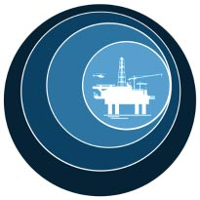Helicopter Crashes -- 17 Fatalities
Effective Date: 9/20/1978
 | Minerals Management Service Gulf of Mexico OCS Region |
Notice No. 075
September 20, 1978
OCS Operations Safety Alert
Helicopter Crashes -- 17 Fatalities
A helicopter carrying a pilot, co-pilot, and 17 passengers collided withsteel cable on a crane while attempting to land and crashed. Only the co-pilotand one passenger survived.
Due to wind conditions, lateral control of the aircraft was lost whilelanding. The helicopter slipped sidewards in the direction the wind was blowing,and the main rotor struck a one-inch thick steel cable which was suspended fromthe crane boom. The impact of the collision shattered the main rotor blades, andsevered the steel cable. After the collision, the craft skidded over the edge ofthe platform and fell into the water over 100' below.
The ensuing investigation revealed that the crane cable was only 5'5"from the skirt of the heliport. The crane was not being used at the time of theaccident, and, unfortunately, it had not been turned away from the heliport.Also, winds were observed gusting up to the rated maneuvering limits of thehelicopter. Normally, the pilot would turn the nose of the craft into the windand land without incident. In this instance, the pilot could not turn the craftfor fear the rotor would strike the cable.
This accident was caused by two violations of basic established safety ruleswhich are:
1. Anytime a crane is not being used it should be turned away from theheliport or secured in its cradle.
2. Helicopter pilots should not attempt to land when obstructions infringe onthe required landing zone.
To prevent recurrence of this type of accident the operator of the helicopterhas again instructed pilots not to land where obstructions exist or during craneoperations which might trespass on the necessary flight path. In addition, theyhave requested that the following items be performed by platform personnel:
1. The crane shall be in its cradle or locked with the boom facing 180 awayfrom the heliport when the crane is not in operation.
2. All crane actions shall cease during helicopter activities.
3. The crane operator shall not be at the controls of the crane whenhelicopter functions are in progress.
[signed] D.W. Solanas
Oil and Gas Supervisor
Operations Support
Gulf of Mexico Area






